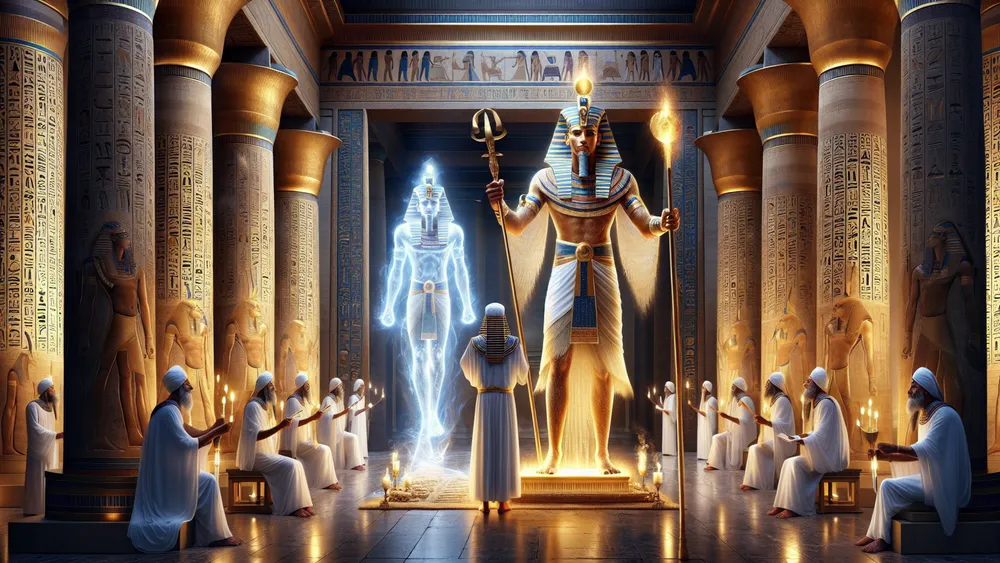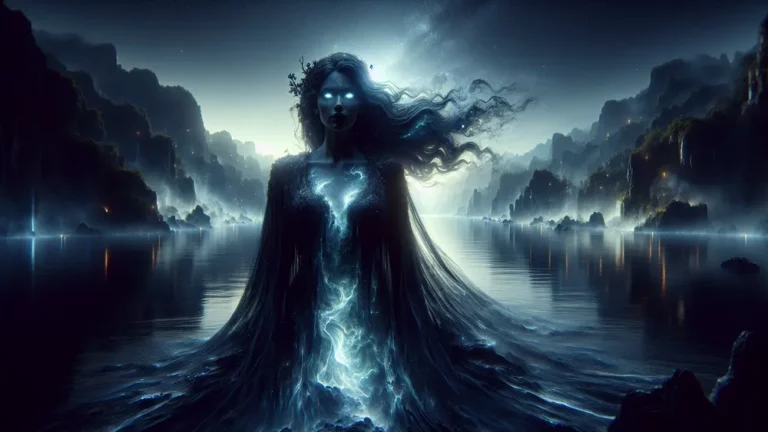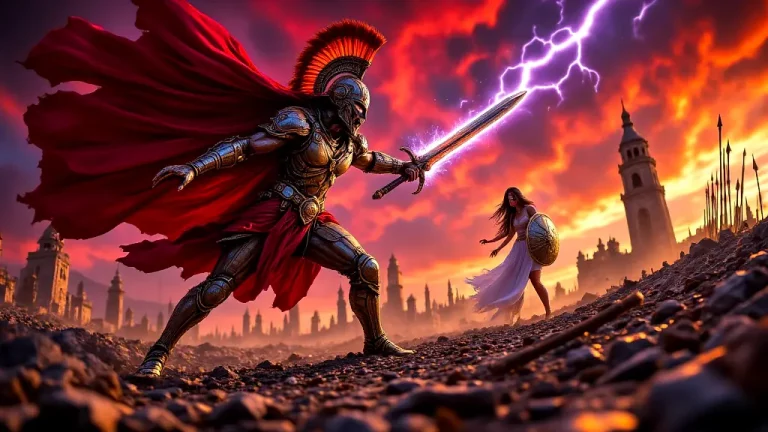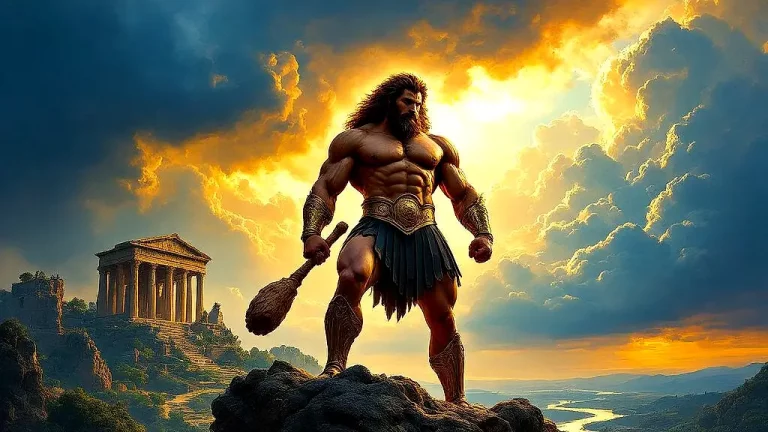Ka: Ancient Egyptian Life Force and Spiritual Double
If you had a spiritual twin that went with you through life and beyond, into the afterlife, this is what the Ancient Egyptians thought of as Ka. In this post, we will look into the many-sided nature of Ka which means a life force and spiritual twin, where it came from and how it changed, and its part in both daily life and the afterlife.
Key Points:
- Ka is an essential part of the soul in Ancient Egyptian beliefs, representing a person’s life power or spiritual double.
- The Ka was crucial for both life and afterlife, maintaining a person’s existence even after death.
- The concept of Ka originated in early Ancient Egyptian dynasties and evolved from royal and divine associations to encompass all individuals.
- Daily rituals involved offerings to sustain the Ka and maintain peace and balance.
- After death, the Ka embarked on a challenging voyage to the afterlife, necessitating specific burial practices and protection.
- Ka statues were crafted to house the Ka, enabling offerings and serving as a link between the living and the deceased.
- The Ka worked in conjunction with the Ba, which represented the individual’s character or spirit, to form a comprehensive view of the soul in Ancient Egyptian beliefs.
And we will look at how Ka was shown in art and how important Ka statues were, plus how it fits with the soul along with Ba and Akh. By the end of this, you should have a complete understanding of Ka and its lasting impact in both old times and now.
Ka: Overview and Key Facts
| Key Point | Description |
|---|---|
| Definition | The Ka is an essential part of the soul in Ancient Egyptian ideas, often called a person’s life power or spiritual double. |
| Significance | The Ka was thought to be vital for both life and afterlife, keeping the person’s being even after death. |
| Origins | This idea of Ka goes back to the early kings of Ancient Egypt, with roots in older religious habits and practices. |
| Representation | In drawings and old writings, the Ka is many times shown as a pair of upraised arms or as a copy of the person. |
| Daily Life | Daily rituals had the Ka in them, with gifts made to feed and keep it. |
| Afterlife | Looking after the Ka after death was a main concern, needing complex burial habits and death writings like the Book of the Dead. |
| Ka Statues | Sculptures were made to hold the Ka, giving a physical form for offerings and making sure it was in graves and holy places. |
| Relation to Other Soul Parts | The Ka is one part of the soul, which is not the same as but connected with the Ba and Akh, creating a full view of the soul in Ancient Egyptian thinking. |
| Modern Interpretations | The idea of Ka has affected today’s spiritual thoughts and is many times mentioned in books, movies, and shows. |
The Idea of Ka in Ancient Egyptian Belief
To really understand why Ka is important, it’s necessary to look into its meaning, where it started, and how it changed in Ancient Egyptian customs. Let us go into these parts in detail.
What Ka Means and Why It Matters
For Ancient Egyptians, the Ka is a basic part of the soul, often called a person’s life power or spirit double. Think of it like a spiritual twin which goes with you during life and thus exists after death. The Ka was believed to be important for both life and afterlife, keeping the person’s being beyond the physical world. To help you understand its importance, think about these points:
- Life Force: The Ka was seen as the essential part that made a person alive, which is like how we think of spirit now.
- Spiritual Double: It was seen as a duplicate of the person, which ensures their presence in both physical and spiritual places.
- Afterlife Sustenance: The well-being of the Ka was crucial for a good journey into the afterlife, and it made burial customs and rituals focus on it.
The Ka was perceived as the life force essential for existence in both life and afterlife, acting as a spiritual twin guiding a person through physical and spiritual realms.
Where the Idea of Ka Came From and How It Changed
The idea of Ka starts in the early dynasties of Ancient Egypt, with beginnings traced back to old religious ways. Firstly, the Ka was linked to the sacred being of kings and gods, but it over time became a part of everyone’s soul. Texts like the Pyramid Texts, Coffin Texts, and the Book of the Dead give important insights into how Ka changed.
These writings, which were carved on tomb walls and coffins, show the growth of Ka from royal and divine ideas to include all people, reflecting the spread in afterlife beliefs. Additionally, statues and amulets also show how ideas of Ka changed, proving its lasting importance in both life and death.
How Ka Played a Part in Everyday Life and Beyond
To know Ka’s part in daily rituals and what happens to Ka after death. It gives a complete look at how important it was in Ancient Egyptian life. Thus, let’s look further into these parts.
Ka in Day-to-Day Rituals and Practices
Every day for Ancient Egyptians, Ka was important, part of different rituals and things to keep it well. They needed to keep the Ka healthy because it was important for keeping peace and balance. They had common rituals, like giving food, drink, and burning nice-smelling stuff at home altars or temple places. Like leaving flowers at a grave now. These things fed the Ka, keeping it strong and happy. Priests had a big part in these, doing fancy things in temples to respect the Ka of people living and dead. Temples were the main places for these things, where priests did everyday rituals for the Ka. Here are some main things:
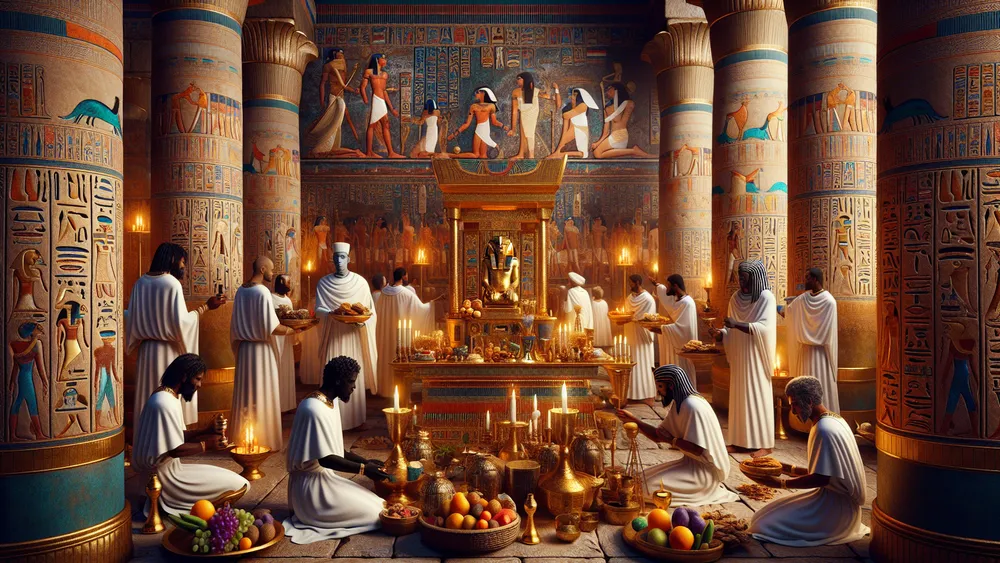
- Food and Drink Offerings: Given often to feed the Ka.
- Incense Burning: Burned to clean and make the Ka happy.
- Prayers and Hymns: Said to respect and call the Ka.
- Temple Ceremonies: Done by priests to keep the Ka strong and healthy.
Ka’s Journey After Death
Ancient Egyptians thought the journey of Ka after dying was important for the soul’s trip to the next world. The Ka left the body and went on a trip to the place of the dead. This trip was filled with hard things. The Ka needed to go through many tests to reach forever peace. Egyptians believed the Ka needed food and safety while it traveled, so they made special ways to bury people.
They built tombs and pyramids which were not only places to rest but also strong shelters to protect the Ka. Inside they put food, drink, and other things to feed the Ka, making sure it stayed strong and could finish its trip. The Book of the Dead and other funeral texts were very important for helping the Ka in the next world.
These writings, often put on stone walls or on paper scrolls, had spells, prayers, and steps meant to help the Ka get past problems and stay safe in the next world. Picture these texts as old guidebooks or maps, giving the Ka the needed help to move through the next world well.
By following the help given in these texts, the Ka could get a peaceful life in the next world, get back with the Ba, and change into the Akh, a blessed and forever part of the soul.
Symbols and Art of Ka
For a full understanding of Ka’s importance, it is important to see how it was shown in Ancient Egyptian art and symbols. Thus, let’s look into these interesting pictures.
How Ka Was Shown in Art
Ancient Egyptian art and writing often show Ka with arms up, which means it protects and hugs. This symbol was many times put in tomb writings and holy books to show Ka is there. Moreover, the Ka was also shown sometimes as a double person, which shows the idea of Ka as a spirit twin. These pictures were not just for looks; they had big religious and social meaning.
They showed Ka’s part in life and the next world, reminding about the spirit side of living. Common signs and pictures for the Ka are:
- The upraised arms symbol: Showing protection and hugging.
- The double person: Showing Ka as a spirit twin.
- Writings in tombs and holy places: Showing Ka is there.
These pictures were very important for believing ways, helping to show hard spiritual ideas in a simple way, like how modern holy signs show deeper meanings.
Why Ka Statues Were Important
Firstly, people carefully made Ka statues and put them in tombs and temples. They were important spiritually in Ancient Egyptian belief. These statues gave the Ka a body that could get food and drink. This let the living keep a link with the dead’s Ka. Food, drink, and other stuff were placed in front of these statues to feed the Ka, keeping it well in the afterlife.
Famous cases of Ka statues include those found in the tomb of Pharaoh Tutankhamun. They were made complex to look like the pharaoh and show his standing. These statues were not only of religious meaning but stood as lasting signs of the person’s identity and legacy. Thus, they were important in both life and death.
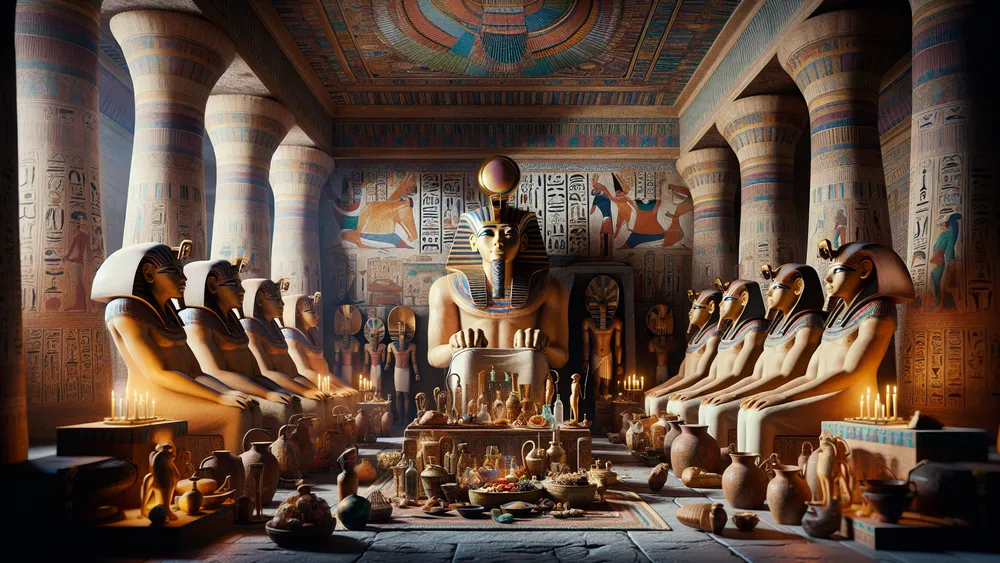
Ka statues in Ancient Egypt held spiritual significance, acting as a link between the living and the dead through offerings of food and drink for the afterlife, symbolizing identity and legacy.
Ka and Other Parts of the Soul
To completely get the idea of Ka, it is important to look at how it works with other parts of the soul in Ancient Egyptian belief. Thus, let’s look into these interesting parts.
Ka and Ba: What Sets Them Apart
Firstly, Ancient Egyptians called the Ba the special character or spirit of a person. This spirit could move between this world and the next. The Ka, however, is the life force or spiritual double that stays near the body. Moreover, the Ba can move, make contact with the living. To say it simply, if the Ka is the person’s being, then the Ba is their character or spirit.
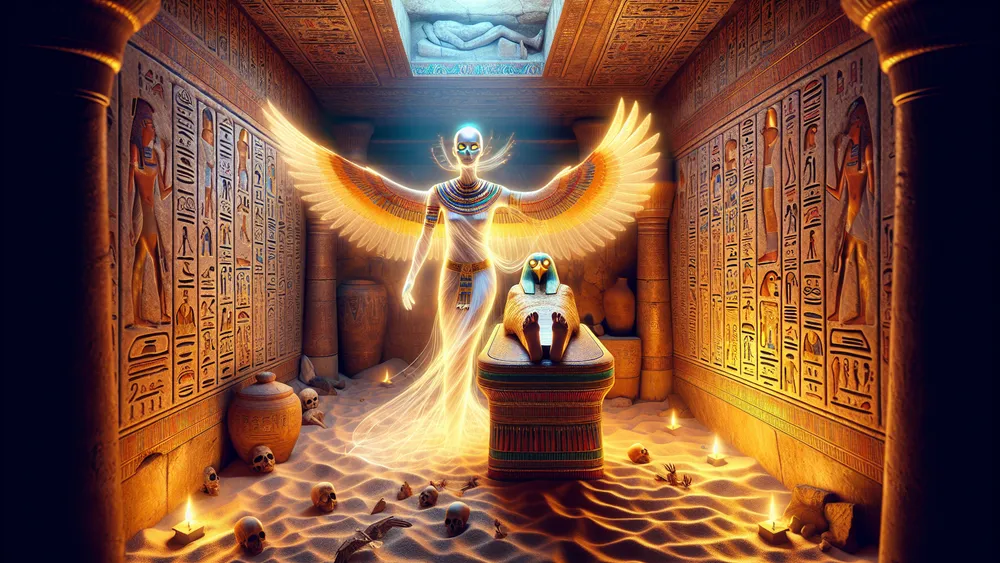
Together, the Ka and Ba give a full view of the soul, with the Ka giving life and the Ba giving uniqueness and movement. Thus, this pair was very important in Ancient Egyptian spirituality. It made sure that the dead could still exist and interact with both the living and gods.
Ka, Ba, and Akh: The Whole Soul Picture
Ancient Egyptians believed the Akh is the changed and honored state of the soul that has got through the challenges of the afterlife. Firstly, it is different from the Ka, which is the life force, and the Ba, which is the character or spirit. The Akh is the end of these parts into a united forever being.
The Akh was thought to live among the gods and the stars, showing a state of happiness and living forever. To put it simply, if the Ka is like the body’s energy and the Ba is like the person’s personality, the Akh is the perfect soul that has gotten eternal life.
The way to turn into an Akh was not instant; it needed particular rituals and ways to make sure the soul’s successful journey. These included the right mummification of the body, saying spells from the Book of the Dead, and priests doing funerary rites.
These ways were made to protect the Ka and Ba, guiding them through the afterlife and helping them join into the Akh. Thus, like modern ceremonies and memorials aim to honor and remember the dead, these old rituals were needed for making sure the soul could reach its ultimate, forever form.
Modern Takes and Mix-Ups
As we go from old beliefs to new views, it is interesting to look at how the idea of Ka has changed and sometimes been mixed up. Thus, let’s look at these modern views.
Common Mix-Ups About Ka
There are many common mix-ups about the idea of Ka because of wrong ideas from old texts and new culture. For example, some think the Ka is the same as the whole soul instead of just part of it. Others do not see how the Ka and Ba are different parts of a person. Here are some of the usual mix-ups:
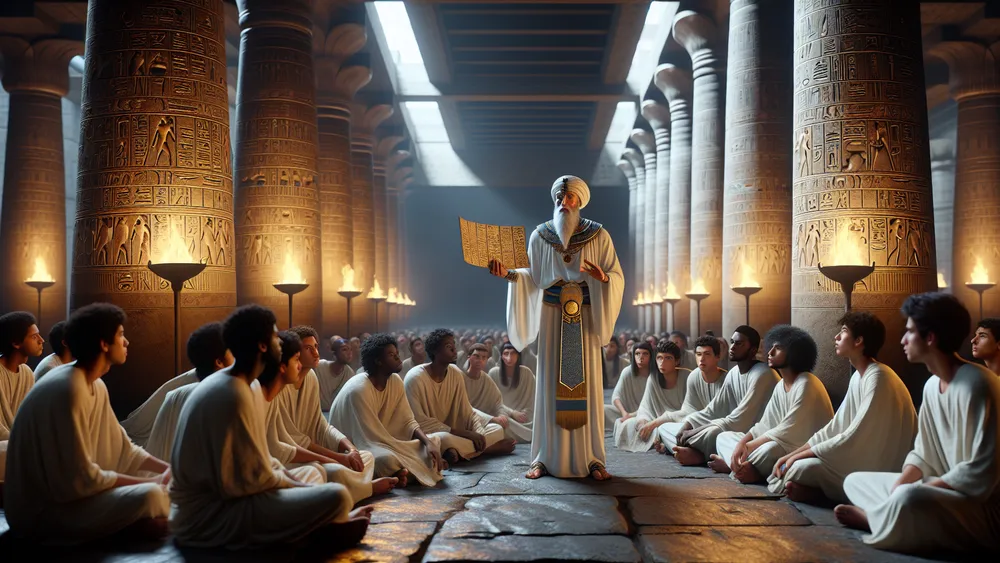
- Ka as the Entire Soul: People often think the Ka is the whole soul, but it is really just the life force or spiritual double.
- Confusion with Ba: Many mix up the Ka with the Ba, which is the character or spirit that moves between worlds.
- Modern Interpretations: Some current pictures wrongly show the Ka as a ghost-like thing, not the life force.
These mix-ups come from the hard parts of Ancient Egyptian beliefs and how hard it is to translate old ideas to new languages. Knowing the Ka in its time and culture is important for understanding its real meaning.
Just like we would not compare a new idea like spirit directly with old words without careful thought, we must look at the Ka with the same respect for its true meaning.
Ka in Today’s Pop Culture
The idea of Ka is in modern books, movies, and shows, often shown in ways that mix old beliefs with new stories. For example, in movies like “The Mummy” series, the Ka is sometimes shown as a ghostly thing or a supernatural force, which can be wrong.
Also, in books like Rick Riordan’s “The Kane Chronicles,” the Ka is brought to younger readers, but with changes. These showings, while fun, often change or make simple the original idea to fit modern stories.
This can lead to wrong ideas about the real nature of the Ka, as people may see it as just a ghost or spirit instead of the important life force it was thought to be. Knowing these pictures in their time and culture is important for understanding the depth and complexity of Ancient Egyptian beliefs.
FAQs
1. What is the difference between Ka and Ba?
The difference between Ka and Ba lies in their functions, with Ka representing the life force or spiritual double and Ba embodying the personality or soul that could travel between the living world and the afterlife.
2. How did Ancient Egyptians ensure the well-being of the Ka after death?
To ensure the well-being of the Ka after death, Ancient Egyptians performed elaborate burial rituals, constructed tombs, and provided offerings.
3. What are some common symbols associated with Ka?
Common symbols associated with Ka include the hieroglyph of uplifted arms and the Ka statue, which were believed to represent the spiritual essence and life force of an individual.
4. How has the concept of Ka influenced modern spiritual beliefs?
The concept of Ka has influenced modern spiritual beliefs by contributing to the understanding of the soul as a multifaceted entity with both physical and spiritual dimensions.

